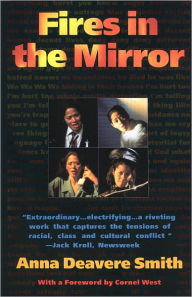Institute of Play’s founding executive director Katie SalenTekinbaş has taught courses on game design, interactivity, narrative of play, and more at the School of Design at DePaul University, and she was Director of Graduate Studies at Parsons, The New School for Design. Somewhat surprisingly, this expert in games and game design says a one-person play written by the legendary Anna Deavere Smith called Fires in the Mirror: Crown Heights, Brooklyn and Other Identities is her favorite book. The play, which is structured as a series of monologues, chronicles the story of the Crown Heights riot from August 1991. Deavere Smith created the monologues directly from transcripts of interviews she conducted with both black and Jewish members of the Crown Heights community where the riot took place.
Salen Tekinbaş recently explained to MindShift why the play/book has had such a profound impact on her work as a teacher of game design. The conversation has been edited for clarity and length.
Salen Tekinbaş: Rather than telling a single story, Fires in the Mirror is structured as a series of monologues. Each monologue presents a different viewpoint of the event that took place in that racially-divided neighborhood [Crown Heights, Brooklyn] in August 1991. Individually, each character reveals something about the riot; in sum, they create the space for a broader reflection on the construction of American character.
I don’t remember how I first ran across the book—it may have been assigned reading in a course on poverty and education that I took in graduate school. A year or two later, I remember watching a video of Smith performing the play, as part of some research I was doing for a course I was teaching that explored language, typography, and the construction of meaning. The video was riveting, it inspired me to go back and reread the book. I had also just spent some time in Crown Heights and was able to appreciate some of the nuances of the play that I had likely missed on a first reading.
 What I took from the book, in addition to an interest in the formal structure of the narrative and the techniques used to tell the story, was a profound sense of respect for the complexity of relationships between people from different cultures, and the importance of allowing space for individual voice.
What I took from the book, in addition to an interest in the formal structure of the narrative and the techniques used to tell the story, was a profound sense of respect for the complexity of relationships between people from different cultures, and the importance of allowing space for individual voice.



